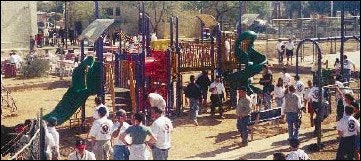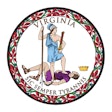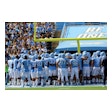Several communities learn how to revitalize neglected urban sites.

Near a decaying picnic shelter, a Little League team uses the horseshoe pit area as a spare baseball diamond, pounding balls against a makeshift backstop-the rest room wall.
In addition, Shamel Park's 60-year-old pool is leaking, and one of the decks has collapsed three inches. Vandals regularly tear toilets off floors and sinks off walls, burn picnic tables, throw rocks through windows, and once even set fire to the community center.
Shamel Park is just one of the parks in disrepair in Riverside, Calif. The city's park and recreation department was recently granted $5 million from the city-enough to revamp four of its 32 playgrounds-but at the same time, the department has identified a total of $147 million worth of needs, which won't be addressed overnight.
What can park and recreation officials do to turn around parks in such dire straits-parks suffering from complete physical disrepair and nearly insurmountable image problems?
About 450 miles north of Riverside, in San Francisco, voters helped answer that question recently by passing a $110 million bond to help pay for more than $400 million in repairs and capital improvements to city parks. Much of this will go toward safety upgrades, ADA compliance and erosion control, but the city will also address extensive asbestos and lead removal, dry rot and outdated electrical systems, while renovating facilities to be more intergenerational and multifunctional.
The department has also created programs and amenities that will continue positive developments at the parks. For example, at one park known for its homeless population, as well as conspicuous drinking and drug use, the department has added pathways, an amphitheater and areas for sitting and storytelling, and developed programs focused on nature, birdwatching and photography.
"Historically and nationally, there are statistics that show that the more family activities there are, the fewer criminal activities there are," says Becky Ballinger, public information officer for the San Francisco Recreation and Park Department. "We have active programming for families in areas that have been difficult to control."
San Francisco has also been very fortunate in drumming up community support for parks. More than 75,000 volunteer hours were recorded last year through regular volunteer programs, plus planting and cleanup days. A neighborhood parks council helps organize community park groups, and Friends of Recreation and Parks organizes and fiscally supports "friends" groups for each of the city's parks, in part through a program offering one-time grants of up to $10,000.
But despite these efforts, and increased police diligence, graffiti and vandalism remain ongoing problems. Park department staff must constantly keep an eye on equipment, not just for loosening bolts, but for slashes in slides and other signs of vandalism. If protective glass is not already used in lighting fixtures, it is substituted for standard glass. Anti-graffiti coating is applied to signs, murals, benches and public monuments, preventing paints from seeping into porous materials, and allowing the unwanted paint to be easily washed off.
"Generally, taggers seem to stay in a given neighborhood on a given day, so we can usually remove graffiti within 24 hours," Ballinger says. "We have some areas where it is an ongoing problem, but the city as a whole has been very aggressive about graffiti removal."
Ballinger says city plants are also regularly vandalized. Newly planted saplings are often snapped in half, and others are simply taken. In Golden Gate Park, 70 rose bushes were stolen in just one year. Plus, the city incurs $3,000 to $5,000 a year in damage to athletic fields, usually caused by people who climb over fences to use fields in wet conditions. Part of Ballinger's responsibilities include educating the public about the effects of damage on the parks' budget.
That's also part of the strategy devised by Phoenix park and recreation officials. At University Park and Willow Park, two of Phoenix's most struggling urban sites, recreation coordinator Sheila Stubler encourages the community to take ownership in the parks. If she sees kids writing on park property, she immediately asks them to clean it up. She also enlists kids' help as the "eyes and ears" of the parks. Since funding needed to fix the damage might otherwise be applied to their field trips and activities, they are usually eager volunteers. She informs parents and community members, and encourages their support.
"If we get vandalized, I publicize it," she says. "I let the community know what's going on and I tell them we need their help to stop it." But that's not where community ownership ends. Recognizing that it takes more than removing criminal activity and adding new amenities to bring a park back to life, Stubler actively recruits community members to volunteer and assist with neighborhood cleanups, which gives them a sense of ownership and pride in their parks. With a greater number of people concerned about the parks' welfare, it is much easier to discourage criminal activity and encourage positive development.
"It's their community," Stubler says. "They own the parks, and if they're going to take care of them, then they need to step up and help out." Five years ago, University Park, once the prime meeting spot for the community, was on the verge of being closed. Located on one of the city's most dangerous streets, the park had become unsafe and neighbors had begun complaining. "This place was filled with homeless people, transients, prostitutes and everyone but who you'd want to be here," says Stubler. "It was filled with a lot of people involved in illegal activities."
Before the park could shut down, though, area residents became involved in saving it. To keep criminal activity out, they raised funds to install wrought-iron fencing. While this meant the park could only be open during regularly staffed hours, those hours were expanded through funding from the police department's Block Watch program and Weed and Seed, a federally funded program designed to weed out criminal activity and seed the community with social services and intervention programs. Renewable for three to five years, the program grants the community $250,000 each year, of which $80,000 is allocated directly to the police department for crime reduction, with the remainder split between the park and recreation department, neighborhood services and nonprofit community groups.
Much of the park and recreation department's portion is spent on materials and programming for neighborhood youth, who are now enjoying brand-new playground equipment. Most of the original equipment was removed during lead paint abatement several years ago. Lacking funding for replacements, Stubler networked to find a major playground manufacturer willing to donate equipment worth $25,000. In addition, the city recently completed construction of a new recreation center and renovation of the swimming pool and bathhouse.
A couple of miles away, Willow Park is undergoing a similar resurrection. Left with even less equipment than University Park after lead paint removal, Willow Park was desperate for new playground structures, which were procured through another Block Watch grant, plus matching funds from the city. Lacking fencing, the park still must deal with transients, prostitutes and others at night, but during the day, it is again a haven for families. Much of Phoenix's success can be attributed to cooperative efforts.
Stubler has a list of local resources, such as the Salvation Army and other nonprofit organizations, posted at the community center to assist homeless people and others in need. She has also forged strong working relationships with the police department and neighborhood associations.
"One of my goals was to start communicating with neighborhood groups on a regular basis," Stubler says. "I said, 'I'll come to all your meetings, and we'll see what we can do to make things better. But by the same token, you need to come to the park to volunteer. You need to show that you're willing to make this park change.'"
Through partnerships, the department has been able to develop a lengthy schedule of regular events, including outof-school and back-to-school dances, Thanksgiving dinners, and celebrations for Easter, Cinco de Mayo, Independence Day, Mexican Independence Day, Halloween and Christmas. Much of this activity is made possible through volunteer efforts, including involvement from teen council volunteers. An average of $14,400 is donated every year for special events, and support continues to grow.
"We're looking at starting a community recreation council, because the community wants to be involved with the park," Stubler says. "Things are coming together."
Back in Riverside, park and recreation director Terry Nielsen has been taking it one step at a time-making repairs whenever funding allows and capitalizing on efficiencies wherever possible. He has been able to make major steps since one of his employees retired, allowing him to hire a less-expensive outside contractor for mowing services, which frees up funds for much-needed upgrades, such as replacements for 20-year-old picnic tables and benches. But in Riverside, as well as in struggling parks across the country, it will take time, patience and diligence to make things right again.
































